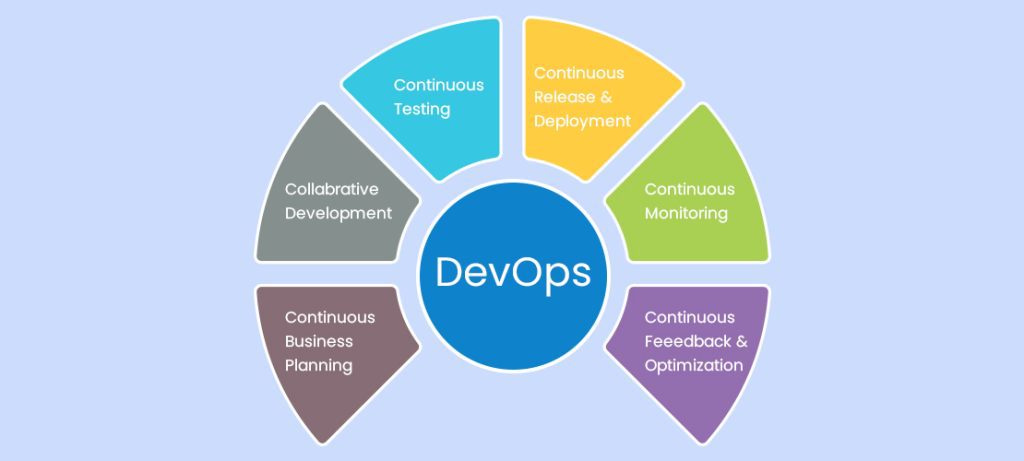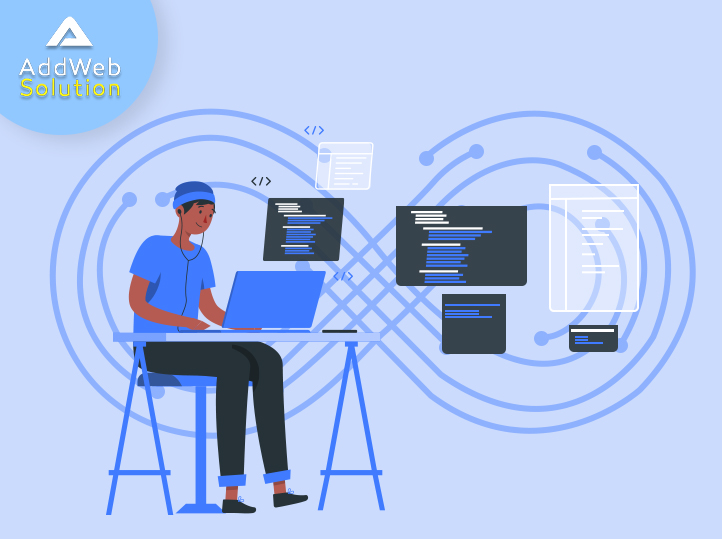The year 2020 has arrived, and its arrival brings a lot of innovations and transformations in the Information and Technology (IT) sector and especially to DevOps technologies. The study conducted by experts at Grand View Research says that the DevOps market is anticipated to be worth 12.85 billion USD by 2025. The adoption of DevOps practices rose 17% in 2018 as compared to 10% in 2017, according to Statista. It has been seen that top organizations that have included DevOps practices in their Software Development cycle have experienced a 63% improvement in the quality of software deployments. Due to Agile adoption, 63% frequency in the release of new versions of software! Also, higher standards of coding have been observed.
Benefits of DevOps
- Quick amendment response during the development phase.
- Adapting Agile made easy.
- It is a perfect route for collaboration between teams.
- Iterations help in identifying bugs and their quick resolution.
- Teams can focus more on development and be free from deployment worries.
- Resilient services by teams.
- Cross skilling of teams and better self-improvement Faster time to market.
- It improves the quality of the product.
The market for DevOps is being driven by the increased adoption of Agile methodologies, cloud technologies, rising digitisation, and business automation. Adopting DevOps in the IT culture is a necessity for better team collaborations. So is your business ready to embrace DevOps culture in 2020? Various tools available for DevOps are Docker, Jenkins, GIT, etc. You can always take assistance from Cloud DevOps Consultants or DevOps service providers. If you want to know more about DevOps trends in 2020, then keep reading.
Also Read – Chief Trends Predicted in 2020 to Shape Autonomous Digital Enterprises

The Shift of Winds from CI- Pipelines to DevOps Assembly Lines in 2020
The trends show the interests of the IT industry in CI as the only tool for deployments is slowing down. Continuous Integration (CI) is the process that automates build and runs unit tests on each PUSH of code. CI-Pipelines only work in segments. In order for all the teams to collaborate better, there is a need for automation of CI along with Continuous Delivery and Continuous Deployment of the code and binaries to the target environments. That is where DevOps comes into the picture to improve the process of planning, coding, and automation of delivery and deployment.
Related Reading – How to Setup a CI/CD Pipeline with Kubernetes 2020
Embedded Security on Top of List
Cyber security is one of the vital concerns for IT corporations. DevOps is going to be spending a lot of resources on security. The term being used is DevSecOps. The increase in the need for security has made the integration of security in the application development process necessary. By this measure, the vulnerabilities will decrease, and the whole process will be effective, secure, and efficient.
Need for Server-Less Architecture
There will be a simplification of operations with the server-less architecture used by DevOps teams. Legacy systems are being upgraded to server-less operations with solutions like Google Functions, AWS Lambda, and Microsoft’s Azure Functions. This change is cost-effective and also improves the experience of users. This server-less architecture will be the go-to architecture for developers to increase productivity and will need DevOps automation more than ever.
The Future Is Zero-Touch Automation
Zero-touch automation is the future of DevOps automation. There will be no need for human intervention when machine learning is utilized to automate the back-up of vast data fully. The companies which have already implemented or adapted DevOps have seen a significant increase in productivity and faster rates of deployment. Understanding the DevOps cycle and administering automation between all the blocks of sequences.
Shift to Cloud-Native DevOps
There will be an accelerated shift to Cloud-native DevOps since all the enterprises are moving to Cloud-based enterprise products. Cloud adoption ensures flexibility, less downtime, reduces infrastructure expenditures. Gartner predicts that shift to the cloud by 2022 will effect 1.3 Trillion USD of IT industry spending directly or indirectly. Many companies like Google, Microsoft, and Amazon provide cloud computing and storage facilities and smooth operations. These companies are seeing a massive spike in other enterprises looking for their cloud services for faster changes in production.
Containers in Demand
Kubernetes, Dockers, are the container technologies that are in demand due to their ability to deploy the applications independent of the platforms or OS. Containerisation has been trending in the IT sector after the launch of these Container technologies. These containers make distributed development a reality, and delivery can be further improved. These are prominent DevOps automation tools. There is a considerable adoption of containers like Docker and Kubernetes in companies to run their small or large scale apps on the cloud. This will propel these containers further in 2020.
Need for Code Will Increase
Knowledge of coding is going to be in demand. The automation for DevOps requires scripts, and Developers or Testers will be expected to know the scripting languages to code the automation scripts. Manual Testing will be obsolete in the future, and automation a must. Testers have to step-up and learn different coding languages to stay up-to-date.
Artificial Intelligence in Forefront
AI technology and data sciences are showing a lot of potential in the DevOps world. The applications which are driven on Artificial Intelligence are the future, and these teams are turning towards DevOps for automating their application cycles. The continuous process will help AI apps to be tested more frequently, and the Algorithms developed at a higher pace with more accuracy.
AddWeb Solutions
You will miss out on productivity and revenue if you will not join forces and bring DevOps culture in your Software Development processes. It is time to make a resolution to be in sync with the trends and work with AddWeb Solutions; the leading AWS cloud consulting and DevOps consulting and service providers.
Researching and finding the best DevOps tools will consume some time. AWS will help you find the right tool for your teams by helping your team to collaborate DevOps solutions better and get your application faster to the market is our goal. Customized DevOps solution will be provided to your company, enabling you to increase efficiency, reduce failures, and in the process, cut down on costs.
Frequently Asked Questions
Think of DevOps as a teamwork coach. It encourages developers and operations teams to work together seamlessly, breaking down silos and fostering a collaborative spirit for efficient project delivery.
DevOps is like a speed booster for your development pipeline. It streamlines processes, shortens development cycles, and enables faster and more frequent software releases.
Absolutely! DevOps is like a quality assurance expert. It emphasizes automated testing, continuous integration, and continuous delivery, ensuring higher software quality and fewer bugs in production.
DevOps is your reliability engineer. Through practices like continuous monitoring and automated testing, it ensures software systems remain stable and reliable, minimizing downtime and disruptions.
DevOps is for everyone! Whether you’re a large enterprise or a small team, adopting a DevOps culture brings efficiency, speed, and collaboration to your development and operations processes.
DevOps is like a risk manager. By automating testing and deployment processes, it reduces the likelihood of errors, making software development more predictable and less prone to risks.
Absolutely! DevOps is your scaling partner. It provides practices for managing infrastructure as code, making it easier to scale and adapt to the evolving needs of your applications.
Automation is the heart of DevOps. It reduces manual errors, speeds up processes, and frees up valuable time for teams to focus on creative and strategic aspects of software development.
